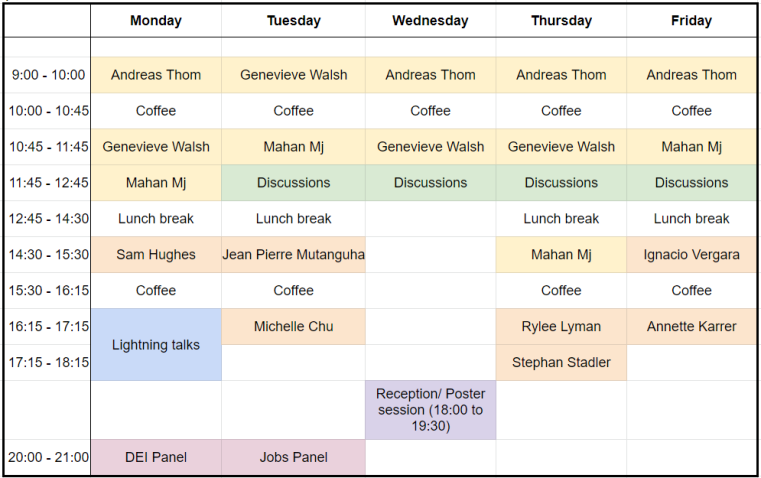Schedule
Here is a tentative schedule.

- All the minicourses and plenary talks will be held in the Botanicum lecture hall SG3
- Lightning talks will be held in the Botanicum (SG3) and the Schloss (S2).
- The Panel Sessions will take place in the Youth Hostel
- Poster Session will take place in Mathematics Münster on the second floor of the Seminarraumzentrum at Orléans-Ring 12.
- Discussion sessions will be held in both the Botanicum (SG3) and in the Faculty of Protestant Theology.
You can download a detailed program and more information here.
Research statements of all participants can be found here.
